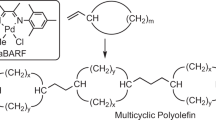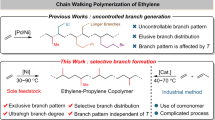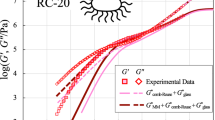Abstract
THE physical properties of a substance consisting of long-chain molecules are modified considerably if branches are introduced into the molecules, and a method for estimating the number and length of the branches in a synthetic addition polymer would be of very great value. That some types of vinyl polymers are, in fact, branched has been demonstrated in this laboratory by an examination of the molecular weight (M) and length (d) of polyvinyl acetate in suitable solvents1. According to light-scattering theory, the value of M/d2 should be independent of M. In fact, M/d2 increases in value as the temperature of synthesis is increased, showing that the polymer becomes more compact in structure, that is, branching becomes more pronounced.
This is a preview of subscription content, access via your institution
Access options
Subscribe to this journal
Receive 51 print issues and online access
$199.00 per year
only $3.90 per issue
Buy this article
- Purchase on Springer Link
- Instant access to full article PDF
Prices may be subject to local taxes which are calculated during checkout
Similar content being viewed by others
References
Bosworth, P., Masson, C. R., Melville, H. W., and Peaker, F. W., J. Polymer Sci. (in the press).
Carlin, R. B., and Hufford, D. L., J. Amer. Chem. Soc., 72, 4200 (1950).
Values for k f and k f′ have been calculated from data collected by Burnett, G. M., Quart. Rev., 4, 292 (1950).
Author information
Authors and Affiliations
Rights and permissions
About this article
Cite this article
BEVINGTON, J., GUZMAN, G. & MELVILLE, H. Self-branching of Vinyl Polymers. Nature 170, 1026–1027 (1952). https://doi.org/10.1038/1701026a0
Issue Date:
DOI: https://doi.org/10.1038/1701026a0
Comments
By submitting a comment you agree to abide by our Terms and Community Guidelines. If you find something abusive or that does not comply with our terms or guidelines please flag it as inappropriate.



